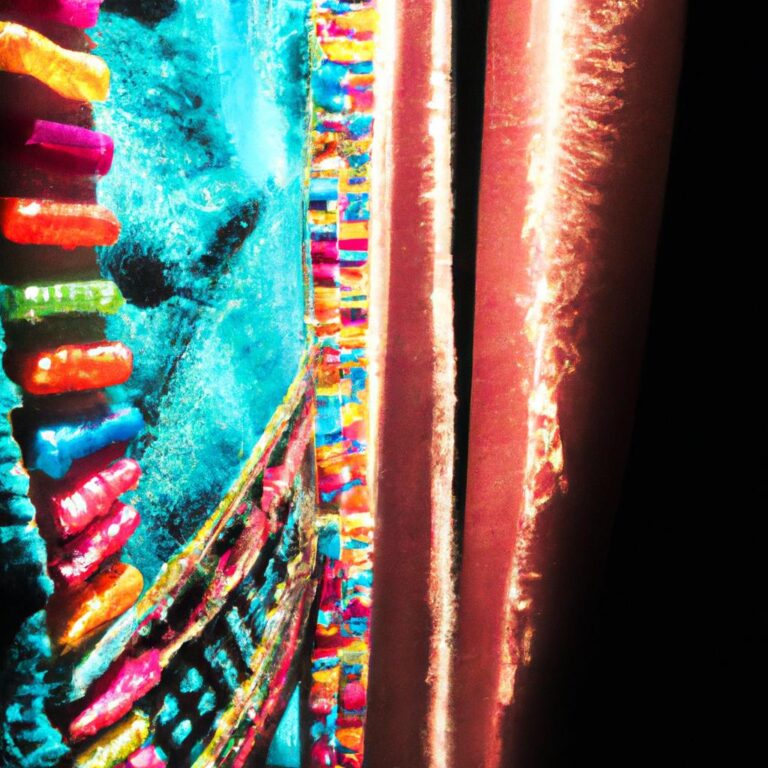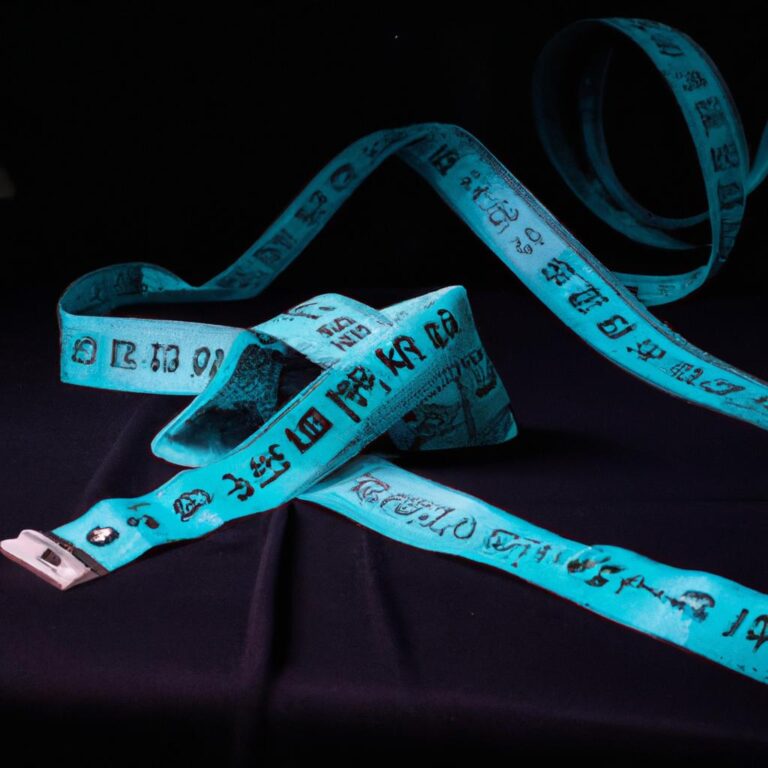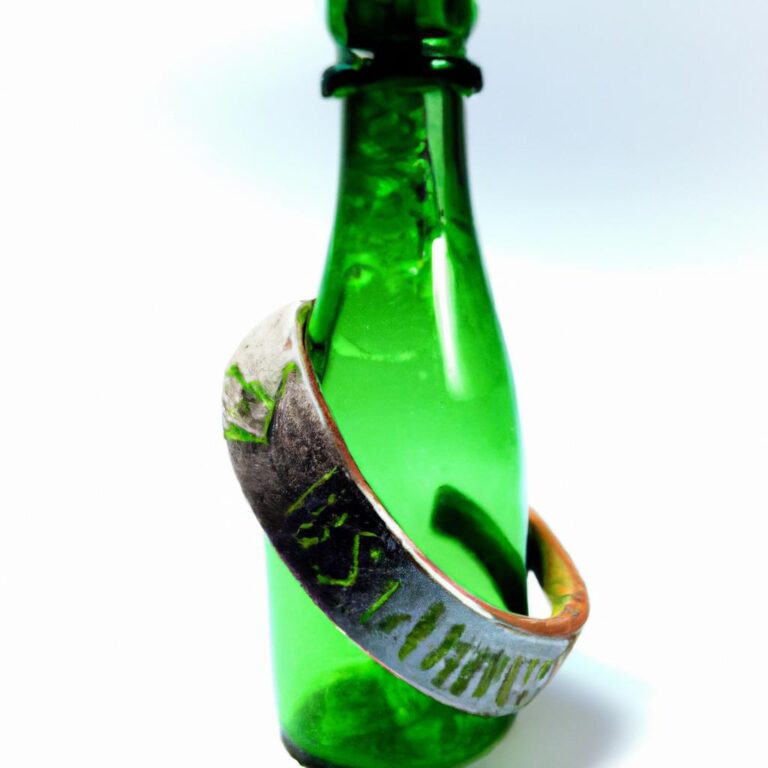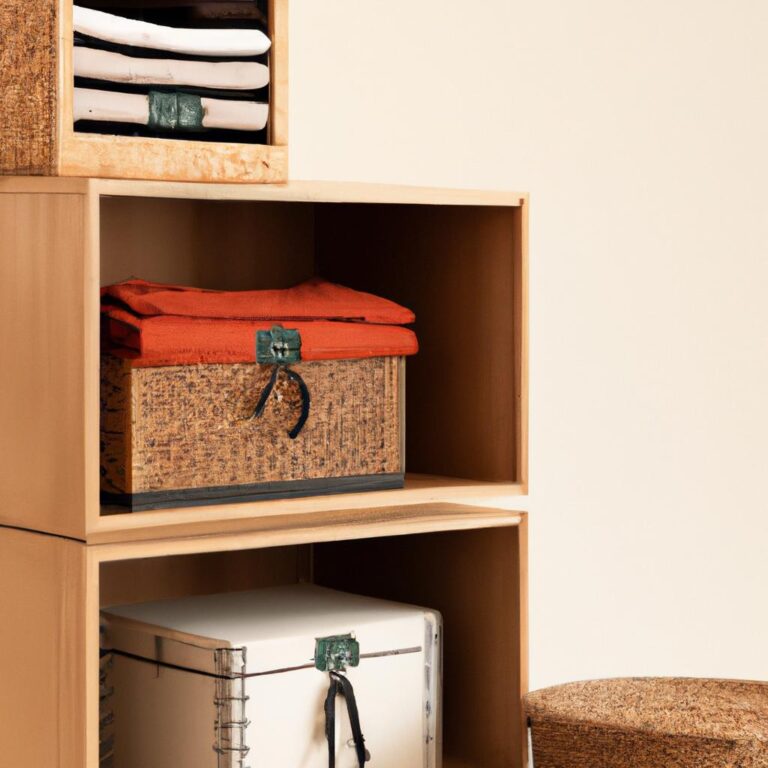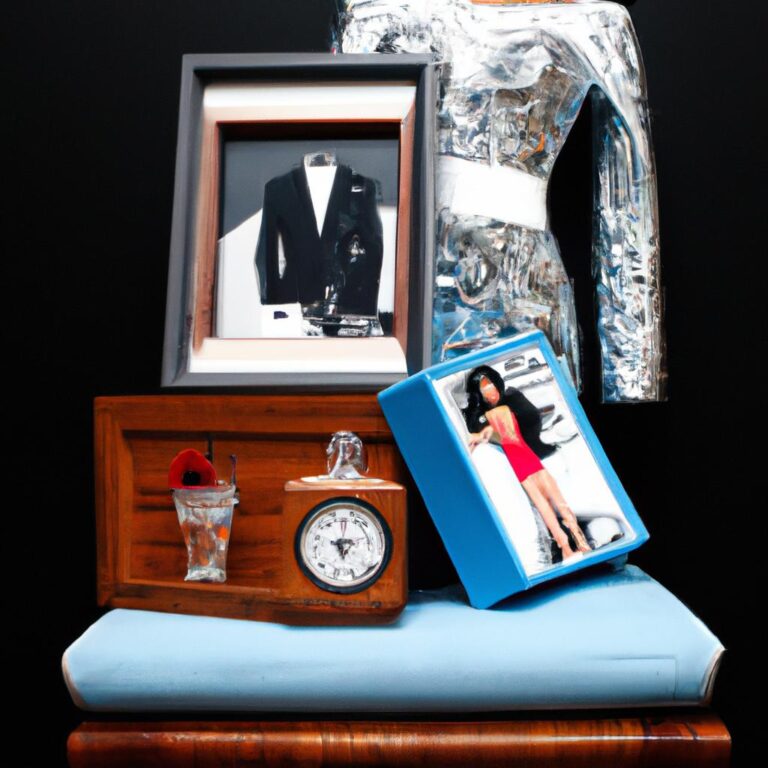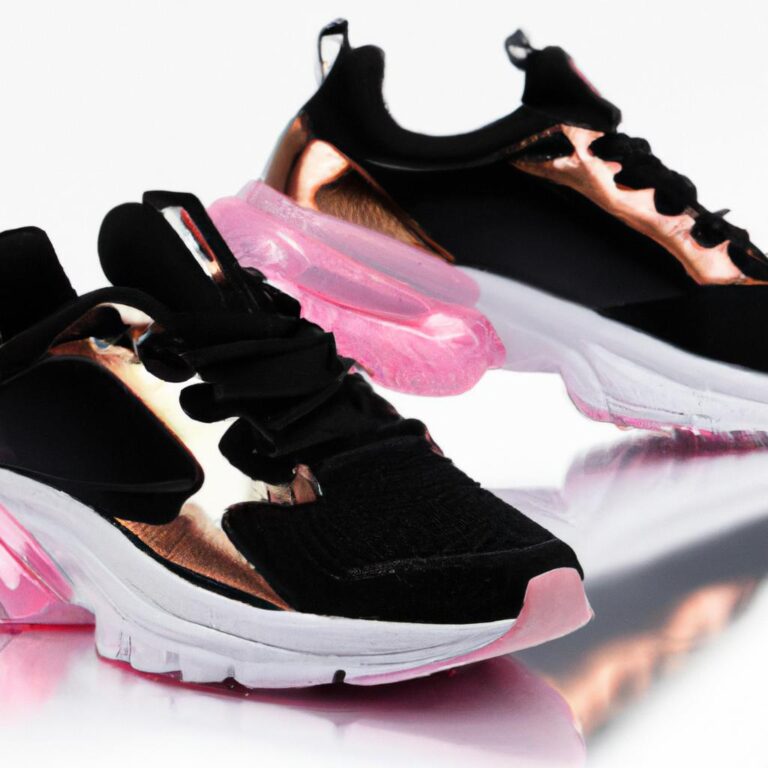
Fashion journalism is a form of reporting that focuses on the fashion industry. It may include topics such as style, trends, and the latest releases from the world of fashion. As a journalist in this field, you will be responsible for providing informative and engaging content related to the world of fashion.
From writing about the latest runway looks to covering up-and-coming brands, fashion journalists must have a deep understanding of the industry and its ever-changing trends. Fashion journalism goes beyond simply reporting on the latest styles. It is about connecting to the readers and providing meaningful commentary on the culture and how it relates to the fashion industry.
Fashion journalism is unique in that it merges two seemingly different worlds, art and communication, into one compelling story. Once a journalist understands the basics of fashion journalism, they can begin to explore the different aspects of the industry and use their skills to create stories that are both informative and entertaining.
Fashion Journalism: Reporting on Style and Trends
Fashion journalism has become an essential pillar in the fashion industry, covering everything from runway shows to interviews with the top designers. Fashion journalists are the ones who act as a bridge between the designers and the consumers, providing up-to-date coverage and giving readers insights into the industry.
Defining Fashion Journalism’s Role in the Current Industry
Fashion journalism is much more than just writing about fashion. It is about understanding the context of fashion within the cultural landscape, exploring the history and changes, and engaging with the public discourse about fashion. Fashion journalism is a combination of reporting and writing that seeks to provide insight into the industry, discuss current trends, and offer commentary on the impact fashion has on society.
Fashion journalists serve as both reporters and critics. They report on the latest trends in fashion, covering fashion weeks, celebrity style, and more. At the same time, they are able to provide critical analysis and commentary on the industry, its impact on society, and its influence on people’s lives.
In addition to providing coverage and commentary, fashion journalists also have the power to shape public opinion and influence the direction of the industry. For example, they can promote ethical practices in the industry and advocate for diversity and inclusion in the fashion world.
Types of Fashion Journalism
Fashion journalism comes in many forms. It can take the form of traditional journalism, such as news stories and interviews. It can also involve creative writing, such as style guides, profiles, and op-eds. Moreover, fashion journalists may choose to use multimedia platforms, such as podcasts and video series, to explore topics related to fashion.
Additionally, fashion journalists may have specialized roles, such as a fashion stylist or a fashion editor. A fashion stylist is responsible for selecting and coordinating clothing, accessories, and other items for a variety of media, while a fashion editor is responsible for creating content related to fashion trends and styles.
How to Write Fashion Journalism Pieces
When writing fashion journalism pieces, it’s important to understand the audience you’re writing for. Knowing what the readers want and need will help you craft an effective piece of writing. Focus on telling a story, providing accurate information, and interpreting what the data reveals.
Researching is key when it comes to fashion journalism. Doing research will help you stay up to date on the latest trends and developments in the industry. In addition to reading fashion blogs and websites, attending fashion shows and following designers on social media are great ways to stay informed.
Once you’ve done your research, it’s time to start writing. Make sure to use a clear, concise writing style. It’s also important to structure your piece in a logical way. Avoid overly technical language, and instead opt for a conversational tone that speaks directly to the reader.
Understanding Different Types of Fashion Journalism
Fashion journalism refers to reporting on current fashion trends and styles. It is an exciting and creative field, as it requires writers to explore the ever-changing world of fashion. Grounded in current events, fashion journalists share breaking news with their audience and provide them with insightful analysis.
This type of journalism is divided into several categories. The most common types are trend reporting, celebrity coverage, designer profiles, show reviews, and shopping tips. Let’s take a closer look at each of these topics.
Trend Reporting
As the name suggests, trend reporting involves writing about emerging trends in fashion. This type of journalism keeps readers informed about what’s hot and what’s not in the fashion world. Trend reporters have to be constantly updated on the latest styles and be able to spot up-and-coming trends.
Celebrity Coverage
Celebrities are closely watched in the fashion world and often set the stage for trends. Therefore, it’s important for fashion journalists to stay on top of celebrity fashion choices and share news and commentary about them.
Designer Profiles
It’s not just celebrities that influence fashion. Designers play a key role in the industry. Thus, fashion journalists often write profiles about new and accomplished fashion designers. These pieces don’t just discuss the designer’s clothing line but can also cover their backstory and other interesting facets of their life.
Show Reviews
Fashion journalists attend fashion shows and provide commentary about the collections and the models that are showcased. They can offer both positive and constructive criticism, which can be helpful for both designers and readers.
Shopping Tips
Shopping tips are a great way for fashion journalists to share useful tips and advice about finding the perfect outfit. They can provide detailed advice about where to find certain items or provide general tips for finding stylish pieces on a budget.
Fashion journalism is a unique form of journalism that focuses on reporting style and fashion trends. Writing fashion journalism pieces require an understanding of the industry, knowledge about current trends, and an aptitude for writing.
As a fashion journalist, your job is to inform readers about what’s currently popular in the world of fashion. You need to be able to write interesting stories that capture the public’s attention and educate them on the latest trends. This can include everything from fashion news and reviews to interviews with designers and influencers.
There are several different types of fashion journalism. Some focus on covering fashion shows and events, while others provide news and reviews of specific products. Feature articles delve deeper into fashion culture and often look at the impact of emerging trends. There are also lifestyle pieces that explore how trends affect everyday life.
When writing a fashion journalism piece, research is key. Get to know all aspects of the industry, including design houses, trends, and recent news. Read up on fashion history and understand the evolution of the industry. Identify influential people in the industry and read their work for inspiration.
The most successful fashion journalism pieces have a central theme. Explore the main elements of style, such as color combinations, pattern mixing, silhouettes, and accessories. Understand how these elements have changed over time and which ones are currently in trend. Provide detailed commentary on the pieces’ construction and design, as well as its cultural relevance.
When researching for a fashion journalism piece, it’s important to consider the audience. Consider the age of the readers and the content they’re likely to be interested in. Tailor your story to speak directly to your readers and make sure it includes information that resonates with them.
Finally, always keep your writing concise and engaging. Use vivid language that captures the essence of the fashion scene without going overboard. Include quotes from people within the industry to give the piece credibility and break up long paragraphs with visual elements.
Writing fashion journalism pieces requires dedication and creativity. It’s a challenging job, but it can also be an incredibly rewarding one. With the right knowledge and skill set, you can create informative and captivating stories that inspire and educate readers.
Fashion journalism is a specialized type of journalism that focuses on the reporting of style and trends in the fashion industry. Research is a critical part of this work, as it ensures accuracy and helps to capture the current pulse of the industry. It’s important to recognize that researching in fashion journalism requires more effort than researching for other types of journalism – as sources can be hard to find and need to be confirmed multiple times for accuracy.
When researching for fashion journalism pieces, the following tips should be kept in mind:
- Research beyond the obvious sources. Rather than only looking at magazines, newspapers or influencers, fashion journalists should also look at everyday life for inspiration.
- Analyze trends from various angles. Consider what trend might become fashionable in the near future, and what trends have been popular in the past.
- Explore new media and technology. When it comes to researching fashion, staying ahead of the latest technological advancements is essential. Social media, apps, blogs and websites are all sources of emerging fashion trends.
- Don’t rely solely on one source. It’s important to get information from multiple sources in order to verify accuracy and provide a more comprehensive understanding of the topic.
- Identify industry experts. When researching for fashion journalism pieces, it’s important to identify key industry experts who can provide valuable insights into the industry.
Similarly, understanding the trends and style elements that are currently pertinent to fashion journalism is important. Trends and styles change constantly, so fashion journalists should always stay abreast of the latest news and developments. They should also be aware of emerging trends and styles, and be able to spot which ones are likely to become popular in the future. Additionally, researching the history of fashion journalism and studying the works of prominent fashion journalists can be valuable when it comes to understanding and predicting trends.
Fashion journalism is an important part of contributing to the fashion industry. Knowing what trends and style elements to be aware of is essential for any fashion journalist. It is necessary to stay on top of the different trends, to ensure the success of any fashion journalism piece.
When writing fashion journalism, it is important to consider the different trends and style elements that are current in the industry. For instance, looking into the colors, fabrics, silhouettes, textures, patterns, cuts, and embellishments that are currently trending. Additionally, looking at the styling details and color palettes that have been popular in runway shows can be helpful in determining what is on trend.
Aside from staying up to date with the fashion trends, researching the backgrounds of designers is essential for fashion journalists. Being aware of the journey of a designer and the message they are trying to portray with their collections helps to give depth to the fashion journalism pieces.
In regards to the structure of fashion journalism pieces, it is important to think about the audience the piece is targeting. This can be helpful in understanding what kind of content is more pertinent and useful to the readers. Additionally, including interviews and quotes from people within the fashion industry can help give personal insight into the world of fashion.
Overall, staying abreast of the trends, understanding the backgrounds of the different designers and knowing the target audience are all important aspects to consider when writing fashion journalism pieces.
Fashion journalism is a specialized field of reporting that focuses on providing readers with the latest news and updates on fashion trends and styles. It’s an exciting and creative way to explore the world of fashion, while informing the public about everything they need to know. Writing successful fashion journalism pieces requires a deep understanding of the industry, staying up-to-date with the latest news and styles, and utilizing innovative approaches to presenting the subject matter.
When writing fashion journalism pieces, it’s important to remember to be concise and to the point. You should avoid going into too much detail in order to keep the reader’s attention. Additionally, you should make sure to incorporate relevant images that illustrate the concepts discussed within the article. This will help to add visual appeal and better explain the ideas you’re referencing.
Keep your language conversational and relatable. While you may be writing about high-end designer names and current trends, your tone should be accessible and engaging. After all, your readers are likely to have varied backgrounds and interests. It’s important to remember that not everyone will understand the complex terminology of the fashion industry.
Research is essential for any fashion journalism piece. Before you begin writing, make sure you stay up to date on the latest trends and news. Look for stories in magazines, fashion blogs, and other media outlets. Additionally, take time to observe individuals on the street and visit stores to observe what they are wearing. This research can provide valuable insight into how people are interpreting current trends.
Lastly, make sure to always double check all information. It’s important to ensure all sources are cited correctly and fact-check any numbers or statistics included in the articles. Misinformation can spread quickly, so it’s essential to verify all information before submitting any articles.
These are just some of the key tips for writing successful fashion journalism pieces. The goal is to create engaging articles that inform the public about the world of fashion and how it is constantly changing. By following these tips, you can stay ahead of the curve and be successful in this rapidly evolving and exciting field.
Creating a Portfolio of Fashion Journalism Work
A portfolio is an important tool for a fashion journalist; a great portfolio will open doors to new writing opportunities. To create a good portfolio, it’s vital to know which type of fashion journalism pieces are needed and how best to showcase them.
The first step is to create a selection of pieces that are tailored to the desired style and tone of the publication. If the portfolio is being created for a specific job, it is important to select pieces that match the style requirements of the company. It is beneficial to have a variety of writing samples, such as interviews, product reviews, trend reports, and features, to display the breadth of skills a fashion journalist has acquired.
When selecting which writing pieces to include in the portfolio, highlight works that show the ability to combine research, interviews, and captivating storytelling. Most importantly, ensure that the pieces are up to date and relevant. Including older pieces might give a false impression of the journalist’s current capabilities.
Fashion journalists can also include descriptions and images of their work in their portfolio. For example, if the portfolio includes an article about the latest fashion trend, the journalist could include pictures of the trend or streetstyle looks to illustrate the piece.
Finally, be sure to display the portfolio where it can be easily accessed and shared. Many fashion journalists choose to display their work on websites like LinkedIn, WordPress, or Wix in order to attract potential employers.
Using Social Media for Fashion Journalism
Social media plays a significant role in the world of fashion journalism today. From spotting the latest trends to networking with potential sources, social media is an invaluable resource for fashion journalists. Platforms such as Instagram, Twitter, and TikTok are essential tools that offer insights on upcoming trends, inspiring images, and potential sources.
One of the most effective ways to use social media is to actively follow fashion influencers, designers, and other industry professionals. This can help you stay up to date on the latest happenings in the fashion world, as well those who are making an impact in the industry. Additionally, this will build connections with the people in the fashion industry so you can tap into their knowledge and expertise when needed.
Another way to leverage social media for fashion journalism is to create content that showcases your expertise. Start by consistently posting content related to fashion and creating content to further engage with your followers. Additionally, comment on other people’s posts to start a conversation and build relationships. By doing this, you can create a community around your page, making it easier to find sources for your stories.
Using social media as a tool for fashion journalism can be beneficial for gaining attention and credibility. While there may be challenges in navigating the online space, leaning into social media can help you build a network, make connections, and drive more readers to your work.
Challenges of Working in Fashion Journalism
Fashion journalism is an exciting and ever-changing field. It is a job that requires a unique set of skills, intelligence, and creative flair. However, it’s also quite competitive and demanding, so it’s important to be aware of the challenges before diving in.
One of the main challenges is the fierce competition for jobs. Many aspiring fashion journalists face significant competition when trying to break into the industry. To be successful, you’ll need to network, showcase your skills, and have the necessary qualifications and experience.
Another challenge is staying up to date with the latest trends. Keeping up to date with the latest fashion trends can be a full-time job. It’s essential to understand what’s in and what’s out in fashion journalism to stay relevant in the industry. To succeed, you’ll need to spend time studying fashion trends, reading relevant publications, and attending shows.
Additionally, you need to be able to write clearly and concisely. As a fashion journalist, you’ll be expected to write engaging pieces that capture the attention of readers. This can be difficult, as you need to find the right words to articulate your ideas. You also need to be able to craft stories that appeal to different audiences.
Finally, you’ll need to be creative and resourceful. To capture the imagination of readers, you’ll need to develop a unique voice and style. This means doing research on different topics and coming up with innovative ideas. It’s also important to be able to think on your feet and come up with new stories in a timely manner.
In summary, although fashion journalism can be a rewarding and fulfilling career, it’s not without its challenges. To make it in the industry, you’ll need to be creative, resourceful and have the necessary qualifications and experience.
Writing fashion journalism can be a rewarding and exciting career. As a fashion journalist, you are responsible for bringing the latest trends and styles to your audience. But it also involves staying up-to-date on current topics, research, and ideas related to fashion. Here, we will discuss the key takeaways of writing fashion journalism, so you can gain a better understanding of this career.
First and foremost, fashion journalism requires great research capabilities, which should include researching current trends, style elements, and analyzing fashion collections. It is important to have a good understanding of the industry and marketplace if you want to make informed decisions regarding trends and themes. Additionally, you should be prepared to write engaging copy that accurately captures the essence of the subject matter.
Second, when writing fashion journalism pieces, you need to have an eye for detail. This includes punctuation, grammar, and spelling. You should also pay attention to colors, textures, fabrics, and other elements that are essential in creating an interesting piece. Such attention to detail will help ensure that your work stands out from the pack.
Third, you should consider the type of audience you are writing for and tailor your content accordingly. Whether you write for a blog, magazine, or other digital platform, you need to make sure your writing captures the interest of your target audience. Understanding who your readers are and what they look for in fashion journalism pieces can help you craft pieces that will grab their attention.
Fourth, successful fashion journalists must also be familiar with the latest social media trends. Having a presence on various social media sites such as Instagram and Twitter can work wonders for your career. It can help you grow your following and network with other influential fashion journalists.
Finally, fashion journalists must stay resilient in their work. As the industry is always changing, there can be periods of uncertainty during certain times. However, it is important to persevere and stay committed to your work. That passion and drive can help you reach new heights within the industry.
By keeping these key takeaways in mind, you can become a successful fashion journalist. Ultimately, success requires dedication and hard work, but by putting in the effort, you can make a real impact in this field.
Fashion journalism is an ever-evolving field that requires skill, creativity, and enthusiasm. As fashion journalism continues to grow and gain more recognition, it is essential for writers to understand the basics of this style of reporting. This guide provides a thorough breakdown of fashion journalism, outlining its role in the current industry, the different types of fashion journalism, how to write pieces, what elements to be aware of when researching, tips on creating a successful portfolio, and how to use social media effectively. The guide also addresses challenges one may face while working in this field and summarizes the key takeaways.
By the end of this guide, readers will have a better understanding of what fashion journalism is, its purpose in the industry, and how to write successful fashion journalism pieces.
Introduction
Fashion journalism is a fast-paced and exciting field which encompasses reporting and writing about trends, style, and events related to the fashion industry. It involves writers researching, attending events, interviewing experts, andstaying up to date with the latest trends. Fashion journalists help readers stay informed on relevant topics such as fashion weeks, designers, celebrities, and other fashion-related news. As a result, it’s important to understand the basic principles of fashion journalism in order to successfully communicate and convey information to readers.
Define Fashion Journalism’s Role In the Current Industry
Fashion journalism plays a crucial role in the current industry by providing an up-to-date and comprehensive overview of the latest trends and styles. Fashion journalism allows readers to stay informed on the newest collections, shows, and designer collaborations. It also helps readers understand the cultural and social significance of fashion and its influence on society. It can even educate readers on global issues tied to the fashion industry, such as sustainability practices and ethical production. As a result, fashion journalism can amplify the influence of the fashion industry by spreading awareness and promoting understanding.
Explanation of the Different Types of Fashion Journalism
Fashion journalism has several subcategories, such as magazine editorials, trend analysis, online reviews, celebrity style reports, blog posts, and fashion show recaps. Magazine editorials feature models in clothing that fit the current season or specific theme. Trend analysis focuses on providing in-depth analysis of current trends, their impact, and potential future directions. Online reviews are often written by influencers or fashion bloggers, and they provide a personal perspective on a particular item or collection. Celebrity style reports involve analyzing the outfits of celebrities to determine what trends they may be setting or interested in. Blog posts explore topics related to fashion such as current trends, celebrity style, and more. Finally, fashion show recaps involve reporting on the fashion shows, discussing the designers, and highlighting the new trends.
Provide an Overview of How to Write Fashion Journalism Pieces
Writing successful fashion journalism pieces requires a combination of knowledge, experience, and creativity. Writers should research the topic thoroughly and develop an understanding of the current trends in fashion. When writing, it is important to write in an engaging manner, providing key facts but also adding opinionated analysis. It is essential that writers double-check all sources to ensure accuracy. Writing should also include background information about each source used so readers can identify the credibility of the material.
Considerations When Researching For Fashion Journalism Pieces
When researching for fashion journalism pieces, there are several things to consider. It is essential to stay informed on the latest trends, as fashion is constantly changing and evolving. Writers should also follow relevant social media accounts, and read various fashion publications. Additionally, writers should attend fashion events to gain a first-hand experience of the latest trends and styles. Furthermore, writers should watch runway shows to stay updated on new collections and designer partnerships.
Describe the Trends and Style Elements to be Aware Of Writing Fashion Journalism
When writing fashion journalism pieces, writers should be aware of the various trends and styles that are currently in the industry. These include the “it” colors of the season, must-have accessories, emerging materials, popular styles, and must-have items. Additionally, writers should be aware of the various fashion labels, new designers, and upcoming collections.
Important Tips for Writing Successful Fashion Journalism Pieces
Successful fashion journalism pieces are written with an eye for detail, a willingness to report accurately, and a respect for the craft of writing. Writers should aim to be concise and to the point when writing. It is also important to avoid jargon and overly technical terms, as this may be difficult for some readers to understand. Furthermore, writers should strive to be unbiased and honest when
comments: 0

